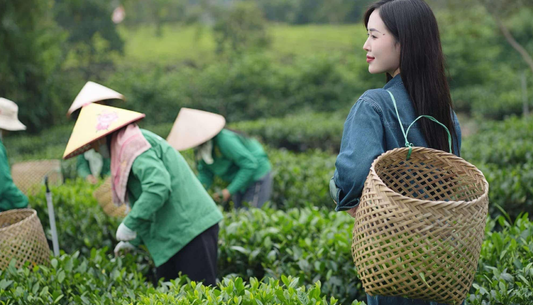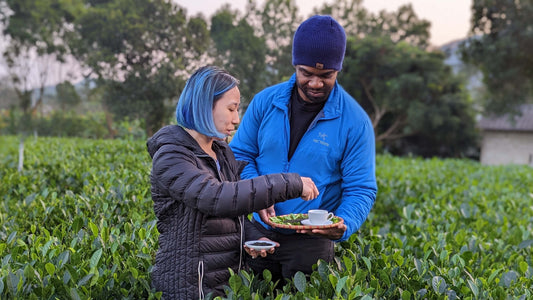
What Makes Vietnamese Tea Unique: Regions and Traditions
Vietnamese tea reflects unique traditions and diverse regions shaped by culture, climate, and craftsmanship.
Early Bird: Save $500 when you book early - Only 2 seats available.
Free Standard Shipping On Orders $45+
We are in Vietnam farms to bring new teas; your orders will be delivered after the holidays.
May 04, 2025
May 04, 2025

Vietnamese tea reflects unique traditions and diverse regions shaped by culture, climate, and craftsmanship.
( Alena K. )
Delicious tasty pastry cookies combined with unique tea flavors!
( Arden )
The tea quality is fantastic!
This tea box gives me a really exciting and enjoyable experience. From opening the box, drinking tea, eating the paired snacks, and reading the tea description, I can tell that they really put a lot of work into this tea box. Definitely a good choice for people who want to try more new teas around the world😊
( Victoria)
I have absolutely loved this subscription learning Teas from around the world and how they pair is so exciting.
( Sara V.)
The tea was very refreshing to have with the pastry. It complimented the sweetness of the pastry very well. I feel like I could drink this tea all day.
( AJ)
Had the pleasure to attend a Teajtea tea ceremony with a delicious variety of teas carefully curated and brewed including a winter dong pian and a Vietnamese yabao. The Teajtea team paired moon cakes, green tea wafers, chaga crackers and other goodies with the teas to complement not just flavors but also texture. They were poised, knowledgeable, and welcoming as they explained the best way to savor each tea and treat. It was an unforgettable and enlightening experience.
(Toni B.)
I was so surprised how delicious the pastry with the tea was! I'm excited to try more combinations
(Neldon )
These boxes are absolutely amazing. A lot of the teas are unique ones that I'd never considered before, but after trying them with the pairings, they're absolutely delightful!! Each box is informative as well and the included information on which teas to drink with which snack, as well as different brewing methods and the notes on each tea are quite helpful. I also love the stickers on the snacks and teas, as they're color-coded to match: each tea has a sticker that goes with the matching colored sticker on the snacks. It's very useful to keep track!! I would definitely recommend this to anyone wanting a unique and fun way to experience tea with others.
(Tawny B.)
The pairing is perfect ! The kit comes with everything you need honey tea bags a flavor for all moods. It’s the best package for everyday!
(Tawny B.)
The pairing is perfect ! The kit comes with everything you need honey tea bags a flavor for all moods. It’s the best package for everyday!

Be the first to know about new blends, exclusive offers, and brewing inspiration from our tea experts.
$0.00 USD
We found shipping rate(s) for your address

